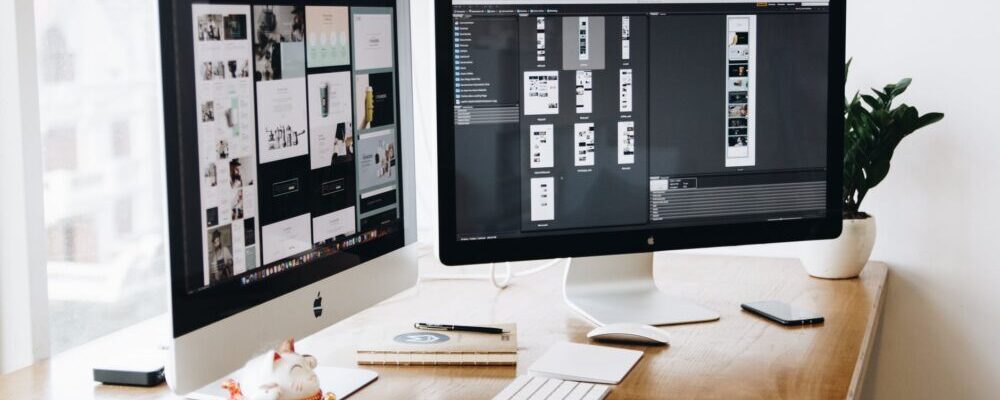A fundamental awareness of a few things is required to create effective event banners, flyers, and posters. To begin, you must understand some fundamental design concepts and best practices.
Then you must gather the necessary tools for the work. And, if you genuinely want your event marketing collateral to stand out, you must learn from the best by looking at real-world examples.
That may look like a lot, but don’t worry; we’ll cover everything and more!
Basics Of Designing Business Cards

A business card is usually the size of a credit card that contains your company’s information. The design of your business card is an essential aspect of your branding and should be a visual extension of your logo.
In this section, We’ll go over all you need to know about business card design so you can tell your designer exactly what you’re looking for. Because business cards are and should, above all, be personal first and foremost, this tutorial offers your alternatives for the card that is most… you.
Steps to Design Business Cards

1. Choose the shape
You’re ready to get started once you have your logo, brand color scheme, and a decent concept of what you want your card to say about you. Follow the eight steps below to figure out which business card design is perfect for you.
You can skip to the second step if you’ve already settled on a typical rectangular business card. Continue reading if you want to understand all of your alternatives, even outside the box strategies.
As printing technology advances and has become affordable, professionals have more freedom to experiment with different shapes. You can even make a whole business card theme out of creative cutting. For example, Cireson’s business card design uses shapes to draw attention to the employee photo, making them appear more friendly and approachable.
2. Choose Size
The size or dimensions of the card is the next option you must make. The country’s standard of living primarily determines this, so that’s an excellent place to start. Even if you aspire to stand out, you must know what others do to counteract it. You need to consider three factors in designing business cards. These are
• The part of the card that is most likely to be removed is the bleed area.
• The Trim line is the desired line for cutting cards.
• Safety line Anything outside of this line is vulnerable to cutting errors. Don’t let essential items like text or logos stray from the line.
• Add Your logo
We’re going to start charting the visual aspects of your business card design, starting with the logo. On your business card, your logo should take center stage, while various flourishes and secondary designs might be effective as well.
3. Add Graphics
Additional graphics could be employed to draw attention to your company’s identity. Without saying it explicitly, you can communicate your or your brand’s personality through graphics, especially colors. A cute cartoon and bright colors, for example, could make you appear approachable and easygoing.
4. Add Necessary Text
Now it’s on you to pick what to put on your business card. Here’s a list of some popular options so you can select which to include and which to leave out.
Name, Company Name, Job title, eEmail, Website UR, LPhone number, Slogan, Social Media.
Designing Flyers

What do you do when someone hands you a flyer in your hand? Do you dump it in the trash without giving it a second thought? Or you read it with anticipation?. When developing a flyer, start by thinking about what grabs your attention. Many businesses get this incorrect, and their fliers end up in the recycling bin. Follow our thorough guide on flyer design to guarantee that your flyers have an impact.
4 Steps for Flyer Design

• Pick a creative flyer design. It should be based on your objectives. Are you attempting to generate awareness, sell more tickets, or provide a discount coupon to determine how your audience learns about you? Maybe it’s a combination of all three. In any case, make sure you select a layout that communicates your aim to the visitor at a glance.
Think about how you want your readers to feel. High-quality but straightforward designs can communicate mood, tone, and memory.
• Prioritize your primary elements, starting with the event name, main image, CTA, and event details.
• Resize digital versions properly. Good cropping and resizing can take some time, depending on the tool you choose to create your flyer design. If you are willing to skip this step, you risk losing any essential information you’ve crammed into a space that’s already tight.
• To get the correct tone, experiment with different colors, frames, pictures, and fonts.
Even if you have no prior knowledge in graphic design, you’ve almost certainly come across Canva over your career. You may explore an unbelievable amount of ideas, templates, and more on the customizable marketing content platform. There are excellent free flyer templates that are available on smallseotools.com. It is considered one of the best free printable flyer maker. You can get these flyer templates by visiting the link: https://designstudio.smallseotools.com/flyer-templates.
Designing Posters

Posters are one of the most traditional and tried-and-true forms of marketing collateral. Posters are a great way to be your thoughts about your sales, events, and fundraisers. We have already covered business cards, flyers, and while there is an overlap between the three, here is what you need to know about designing the posters.
Start with your chosen theme. Posters allow you a little more artistic freedom than flyers or banners, so make sure your design is as attractive as it is effective. If it fits your event’s identity, go for quirkier, more abstract images and unique colors!
Make your most significant poster element the focal point of your design. Posters should draw attention to the core idea of the design, which is often more creative than functional, whether it’s your event name or a cool picture.
Make your event’s name stand out with a powerful header. Font, color, and size are all options to consider. Rather than making everything match perfectly, go for complementing aspects.
Choose between a minimalist and a maximalist approach. A strong choice in either way will prevent your poster from looking too ordinary.
There’s no need to cram too much information into this section; highlight your main selling point and direct readers to where they can find you.
Choose the best online poster maker which has earned top marks from the experts as well. Smallseotools.com is one considered one of the best poster maker websites it also offers a range of posters templates and layouts that you can use to create your custom posters.
Conclusion
When you start any business, or you want to give a message to the community, Many of a professional’s essential demands are met by these business multi-tools, including advertising, brand recognition, call-to-action, and, of course, contact information. When properly designed, these pocket-sized billboards may leave a lasting impact on passers-by, resulting in lifelong consumers.




